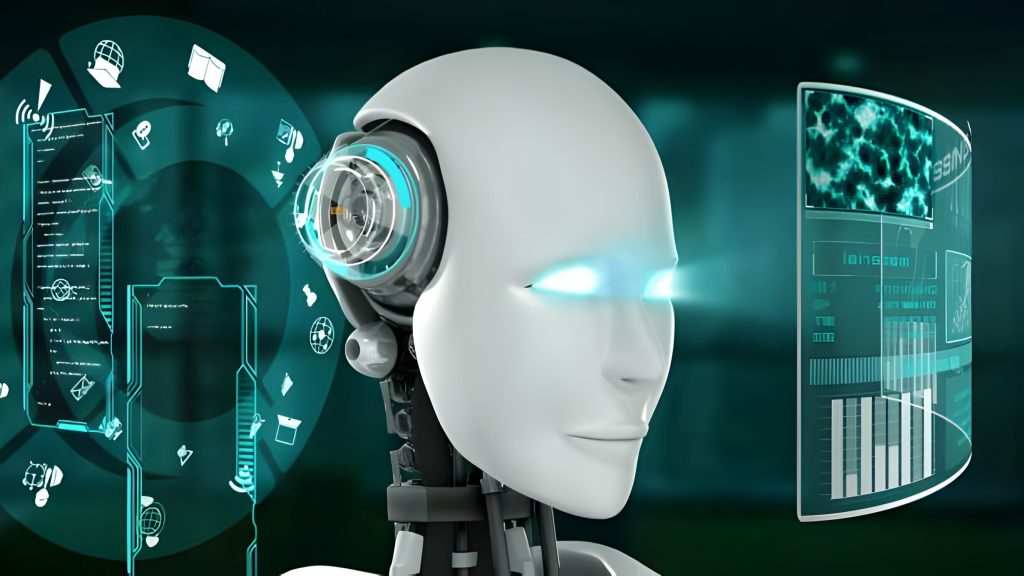AI is transforming the healthcare industry by leveraging machine learning and deep learning techniques to analyze medical data. With ultrasound, genomics, and computed tomography scans, AI accurately diagnoses diseases like Alzheimer’s, cancer, diabetes, and heart disease. By improving clinical systems and patient information, AI assists in early detection and personalized monitoring of health issues. But implementing AI in healthcare comes with challenges like training algorithms on representative data. Despite these hurdles, AI has shown promising results in diagnosing diseases with high accuracy using various algorithms and models.
Overview of AI Applications in Disease Detection
AI techniques, such as machine learning and deep learning, are widely used in healthcare for disease diagnosis, including the detection of skin diseases, liver diseases, heart diseases, and Alzheimer’s. AI applications in healthcare have revolutionized disease detection by utilizing advanced algorithms to analyze medical data from various sources like ultrasound, MRI scans, genomics, and more. These AI techniques have improved the accuracy of disease diagnosis and personalized healthcare monitoring. Through machine learning models and deep learning models, AI has been able to detect diseases that require early diagnosis with high levels of accuracy. Additionally, AI-based systems have been developed for continuous monitoring of vital signs and early detection of health issues. Overall, AI plays a crucial role in disease detection and treatment in the field of healthcare.
Role of AI in Improving Disease Diagnosis
Advancements in digital healthcare technologies, including machine learning and deep learning, have significantly contributed to the improvement of disease diagnosis. AI advancements have led to increased disease detection accuracy and have revolutionized various aspects of healthcare, such as medical imaging, personalized medicine, and overall healthcare innovation. In the field of medical imaging, AI algorithms can analyze images from different modalities like ultrasound or MRI scans to accurately detect diseases. Additionally, AI in personalized medicine allows for the analysis of individual patient data to provide tailored treatment plans based on their specific needs. These technological advancements have not only enhanced disease diagnosis but also improved patient outcomes by enabling early detection and personalized interventions. Overall, AI has paved the way for groundbreaking innovations in healthcare that continue to transform the landscape of disease detection and treatment.
Utilizing AI Techniques for Disease Detection
Utilizing AI techniques for disease detection has greatly improved the accuracy and efficiency of diagnosing various illnesses. AI applications have revolutionized the field of medicine by using advanced AI algorithms to analyze medical data from different sources, such as ultrasound, MRI, genomics, and CT scans. These techniques enable early diagnosis of diseases like Alzheimer’s, cancer, diabetes, heart disease, and more. The use of machine learning models and deep learning models has allowed for the development of highly accurate diagnostic tools. Additionally, AI is being used in personalized healthcare monitoring systems to collect and analyze vital signs data in real-time. This enables continuous monitoring and early detection of health issues for timely interventions. With AI advancements in disease detection and personalized monitoring, patients can receive more precise diagnoses and tailored treatments for better outcomes.
AI’s Impact on Diagnosing Specific Diseases
When it comes to diagnosing specific diseases, you’ll find that AI algorithms have significantly improved accuracy and efficiency in the medical field. Artificial intelligence has revolutionized disease detection by leveraging machine learning and deep learning techniques. Here are some ways AI is making a difference:
- Artificial intelligence in cancer diagnosis: AI algorithms can analyze medical imaging data to detect tumors and predict their malignancy.
- AI for early detection of Alzheimer’s: By analyzing cognitive tests and brain scans, AI can identify early signs of Alzheimer’s disease, enabling timely intervention.
- AI in diabetes diagnosis: AI algorithms can analyze patient data like lifestyle choices and health records to assess the risk of diabetes.
- AI for improved detection of heart diseases: By analyzing ECG data and other cardiac markers, AI can provide accurate diagnoses of various heart conditions.
With personalized monitoring, artificial intelligence enables continuous tracking of vital signs, such as blood pressure and glucose levels, leading to early detection of health issues.
Challenges in Implementing AI for Disease Detection
Implementing AI for disease detection presents various challenges that need to be addressed in order to achieve optimal performance and integration within healthcare systems. One of the major challenges is healthcare data integration, as AI algorithms require access to medical data from various sources such as ultrasound, MRI, genomics, and more for accurate disease diagnosis. Another challenge is the operational dynamism of AI technologies in healthcare systems, which faces numerous hurdles despite being a vital area of biomedical research. To overcome these challenges, best practice methods should be implemented, incorporating principles of inclusivity, software development, implementation science, and individual-workstation interaction. Additionally, the development and refinement of disease diagnosis algorithms using AI techniques will play a crucial role in improving the accuracy and efficiency of disease detection in healthcare settings.
AI-based Techniques for Early Disease Diagnosis
To improve early disease diagnosis, you can explore various techniques based on artificial intelligence, such as machine learning models and deep learning models. These AI-based techniques have proven to be effective in detecting diseases that require early diagnosis, including skin diseases, liver diseases, heart diseases, and Alzheimer’s. By utilizing machine learning algorithms and deep learning techniques, accurate and timely diagnosis can be achieved. Here are four key ways in which AI is revolutionizing disease detection:
- Machine learning models enable the analysis of medical imaging datasets for precise identification of skin diseases.
- Deep learning models like recurrent neural networks (RNN) have shown high accuracy in diagnosing liver diseases.
- Residual neural networks and long short-term memory can accurately diagnose gastrointestinal diseases.
- AI-powered personalized healthcare monitoring systems collect vital signs data and use algorithms to assess the risk of diabetes or other health issues.
With the integration of AI into healthcare, early disease detection is becoming more accessible and efficient.
Personalized Healthcare Monitoring With AI
Improve your healthcare monitoring with personalized systems that use AI to collect and analyze real-time data for vital signs like blood pressure, heart rate, weight, and blood glucose levels. These AI-based sensors enable real-time monitoring of your health, providing valuable insights for better management of your well-being. By constantly analyzing the data, AI algorithms can detect patterns and trends that may indicate potential health issues. This allows for early intervention and lifestyle interventions to improve patient outcomes. The table below highlights the benefits of using AI in personalized healthcare monitoring:
| Benefits of AI in Personalized Healthcare Monitoring |
|---|
| Real-time monitoring |
| Data analysis |
| Improved patient outcomes |
With AI-based systems, you can receive continuous updates on your health status, allowing you to take proactive steps towards maintaining a healthy lifestyle. These advancements in healthcare technology provide accurate and timely information that empowers individuals to make informed decisions about their well-being.
The Development and Features of SISH Algorithm
Take advantage of the development and features of the SISH algorithm, as it acts as a search engine for pathology images, identifying rare diseases and potential therapies. The SISH algorithm has revolutionized pathology image retrieval by teaching itself to learn features and find similar cases in large repositories. However, like any AI technology, it has its limitations. The algorithm requires large memory and lacks context awareness within large tissue slides. Nonetheless, the performance of the SISH algorithm is remarkable. It retrieves disease subtype information for common and rare cancers with speed and accuracy from thousands of patient cases. It outperforms other methods in many scenarios and maintains a constant search speed regardless of database size. With future advancements, the SISH algorithm holds great promise in making disease identification easier as image databases continue to grow.
Challenges in Pathology Image Retrieval and Solutions
Overcome the challenges in pathology image retrieval by implementing solutions that ensure efficient search and retrieval of vast amounts of digital records and reference images stored in modern electronic databases. Pathology image retrieval poses several challenges, including the gigapixel size of whole slide images (WSIs) and the increasing number of images, making search and retrieval slow and complicated. To improve efficiency in pathology image retrieval, AI-based pathology image analysis can be employed. By using AI algorithms, such as the SISH algorithm mentioned earlier, it is possible to enhance disease diagnosis by retrieving relevant images at a constant speed regardless of the database size. However, there are still limitations to consider, such as large memory requirements and limited context awareness within large tissue slides. Nonetheless, these challenges can be overcome with continued research and development in AI technology for pathology image analysis.
| Challenges | Solutions |
|---|---|
| Gigapixel size of WSIs | Implement AI algorithms for faster retrieval |
| Increasing number of images | Develop efficient search methods |
| Limited context awareness | Improve AI algorithms to analyze large tissue slides |
| Large memory requirement | Optimize memory usage through algorithmic improvements |
Performance Evaluation of the SISH Algorithm
In the previous subtopic, we discussed the challenges in pathology image retrieval and how the SISH algorithm solves these issues. Now, let’s delve into the performance evaluation of the SISH algorithm.
- The limitations of the SISH algorithm include its large memory requirement and limited context awareness within large tissue slides.
- However, despite these limitations, the SISH algorithm has shown impressive performance in retrieving disease subtype information for common and rare cancers.
- It outperforms other methods in terms of speed and accuracy, even as the image database size expands.
- The impact of SISH on pathology training is significant as it can improve disease subtyping, tumor identification, and rare morphology identification.
The potential applications of the SISH algorithm are vast. Some benefits include:
- Facilitating rare disease identification through efficient retrieval of relevant images.
- Enhancing pathology training by providing access to a wide range of cases for learning purposes.
- Assisting pathologists in making accurate diagnoses by recognizing relevant regions within images.
- Improving patient outcomes through timely treatment decisions based on comprehensive analysis.
The SISH algorithm represents a major advancement in pathology image retrieval and has tremendous potential to revolutionize disease diagnosis and training in this field.
Future Directions and Applications of AI in Disease Detection
One exciting area for future development and application of artificial intelligence in the field of disease detection is the integration of pathology, radiology, genomic, and electronic medical record data to enhance multimodal case retrieval. This approach allows AI to analyze multiple types of data to detect diseases more accurately. AI can be used in radiology diagnosis to improve the accuracy and efficiency of identifying abnormalities in imaging scans. It can also assist in analyzing genomic data to identify genetic markers associated with specific diseases. Additionally, AI can aid in developing personalized treatment plans based on individual patient characteristics and medical history. However, there are challenges in implementing AI in disease prognosis, such as training algorithms on representative population data and integrating large volumes of healthcare data. Overcoming these challenges will be crucial for the successful implementation of AI in disease detection and management.



